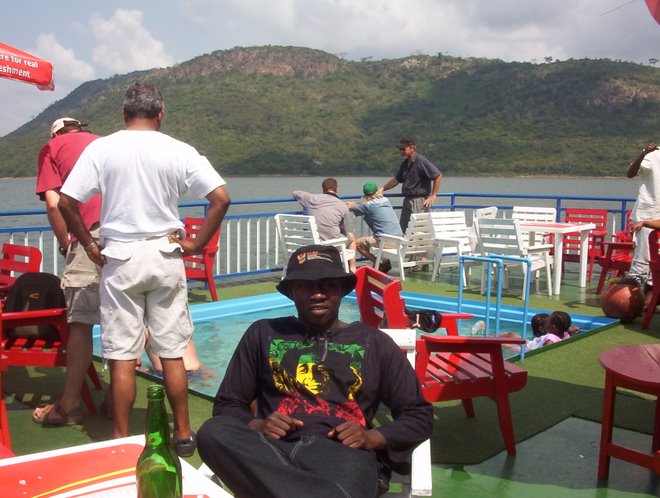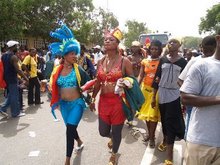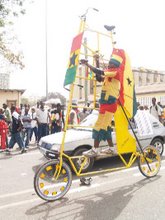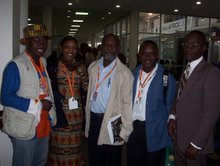Anglogold initiates fish farming project at Homase

The project forms part of a sustainable livelihood support programme being instituted by Anglogold in the area, which is located about 20kilometres north of Obuasi.
It is expected to offer employment to the communities as well as serve as a training ground for those interested in modern aquaculture.
The company is using a disused mined out pit at its Homase concession to undertake the project which would comprise fish farming integrated with livestock rearing, a year round vegetable farming and ecotourism.
The Minister of Fisheries, Mrs Gladys Asmah, the Deputy Minister of Lands, Forestry and Mines, Mr Andrew Adjei Yeboah and the Deputy Minister of Ashanti, Mr Osei Assibey Antwi jointly performed a sod-cutting ceremony on Friday at the area for the commencement of the project.
Also at the ceremony was the Omanhene of the Bekwai Traditional Area, Nana Kakari Apau.
The Homase mined out pit was a two-pit surface gold mining operation which was commenced by Anglogold in June 2002 and came to a close in December 2003 because of the depletion of the delineated economically accessible ores and failure of the eastern wall of the northern portion of the pit.
A decommissioning plan was prepared according to the Environmental Assessment Regulations but during consultations with the host communities and other stakeholders, it was agreed that the pit should be used as a fishpond instead of it being backfilled so as to enable it form part of a sustainable livelihood programme in the area.
This is because, a similar project undertaken at Manso Nkran in the Amansie West District of Ashanti where disused mined out pits of Resolute Amansie Limited (RAL) have been turned into fish ponds was serving the community very well as a sustainable livelihood programme.
The Homase project design emphasises the use of technological innovations and scientific knowledge in modern aquaculture practices.
Mrs Gladys Asmah commended Anglogold for commencing the project saying it gave credence that degraded lands could be put to good use.
Mr Osei Assibey Antwi, the Deputy Ashanti Regional Minister said the project when properly managed would help put money directly into the pockets of the local people.
He said a mine was like a human being, which has a definite lifespan and would die at one point or another. Therefore it was important during the active life of the mine, policies are evolved to leave the mining area a better place that it was before the mine so as to enable the people to remember the mine with nostalgia.
The Minister said he was touched by the sophisticated nature of the technology used, that allowed fish to be bred in cages and which makes harvesting an easier and exciting enterprise.
He expressed government’s appreciation for the effort of AGA towards the socio-economic development of the nation and urged the community leaders to support the project.
The Regional Minister said there are various accusations against Anglogold including pollution of water bodies, damaging people’s houses without the payment of requisite compensation and causing other environmental havocs.
He said whereas he agreed that some of the accusations may be misplaced, in the majority of the cases the accusations have some substance and are worthy of consideration and said the problem was traceable to the lack of consultation and the absence of consensus building among the mine and its stakeholders.








































